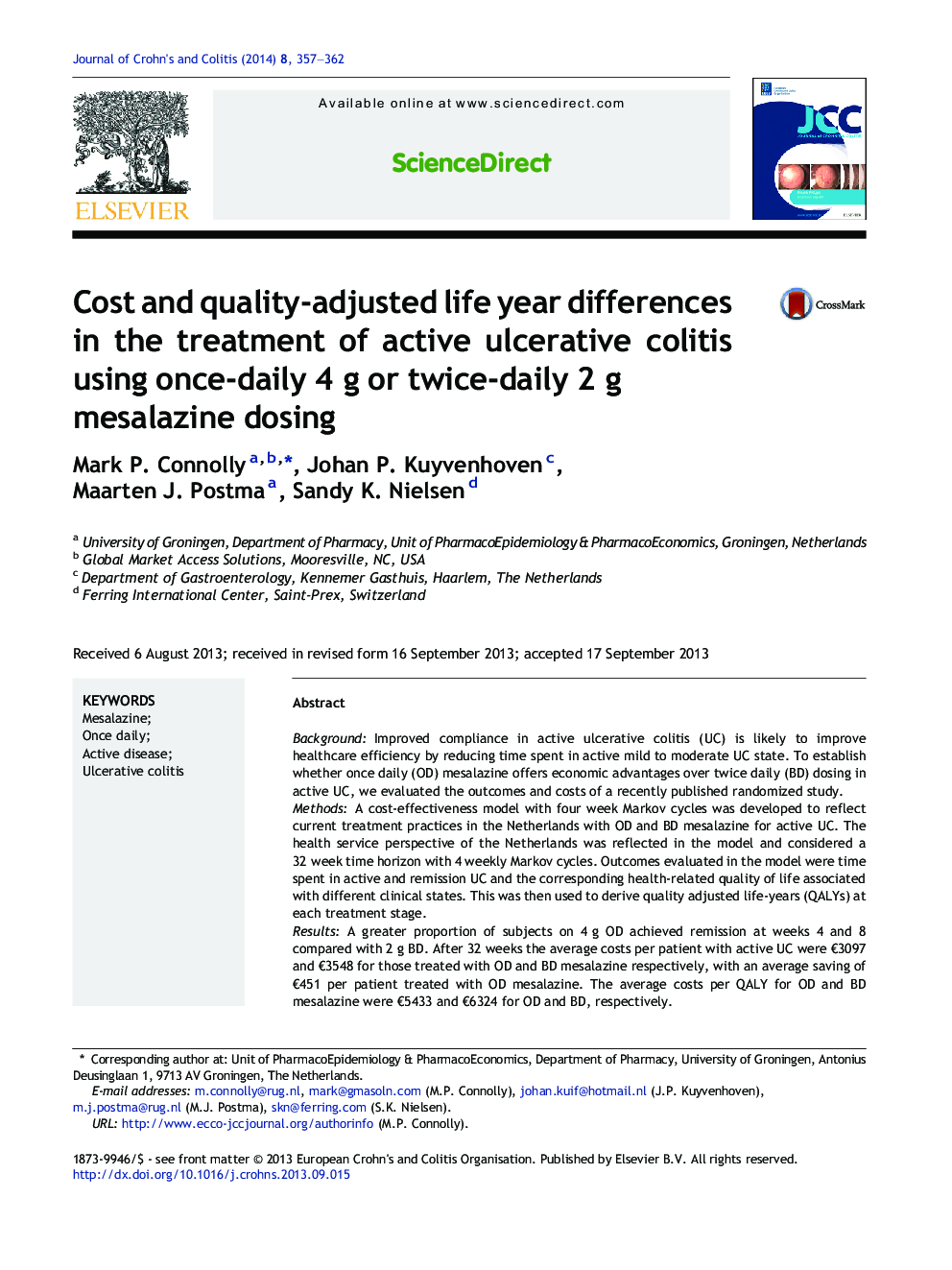| Article ID | Journal | Published Year | Pages | File Type |
|---|---|---|---|---|
| 3312469 | Journal of Crohn's and Colitis | 2014 | 6 Pages |
BackgroundImproved compliance in active ulcerative colitis (UC) is likely to improve healthcare efficiency by reducing time spent in active mild to moderate UC state. To establish whether once daily (OD) mesalazine offers economic advantages over twice daily (BD) dosing in active UC, we evaluated the outcomes and costs of a recently published randomized study.MethodsA cost-effectiveness model with four week Markov cycles was developed to reflect current treatment practices in the Netherlands with OD and BD mesalazine for active UC. The health service perspective of the Netherlands was reflected in the model and considered a 32 week time horizon with 4 weekly Markov cycles. Outcomes evaluated in the model were time spent in active and remission UC and the corresponding health-related quality of life associated with different clinical states. This was then used to derive quality adjusted life-years (QALYs) at each treatment stage.ResultsA greater proportion of subjects on 4 g OD achieved remission at weeks 4 and 8 compared with 2 g BD. After 32 weeks the average costs per patient with active UC were €3097 and €3548 for those treated with OD and BD mesalazine respectively, with an average saving of €451 per patient treated with OD mesalazine. The average costs per QALY for OD and BD mesalazine were €5433 and €6324 for OD and BD, respectively.ConclusionsBased on the results from a single randomized study, OD dosing resulted in a shorter time spent in active UC which resulted in lower healthcare costs.
